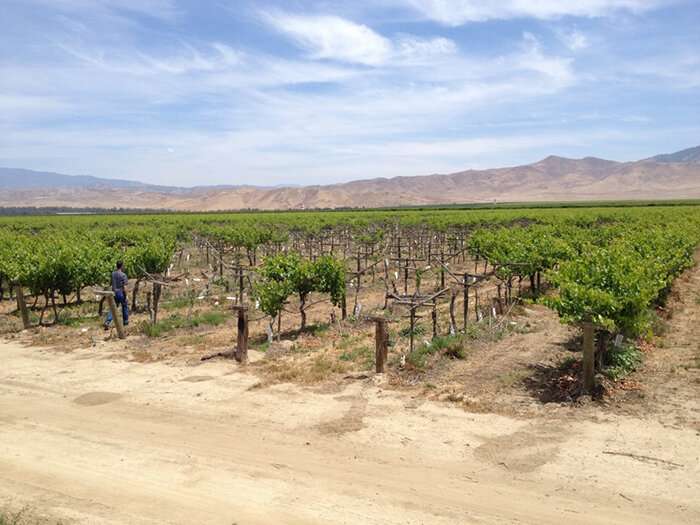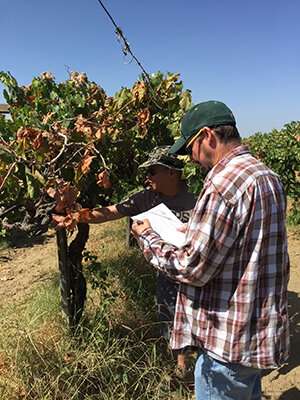Risk of vine-to-vine spread of Xylella fastidiosa is greatest in July and August

The bacterial plant pathogen Xylella fastidiosa is a worldwide threat to perennial tree and vine crops and has been linked to Pierce's disease of grapevine in California, olive quick decline in Italy, and citrus variegated chlorosis in South America.
Scientists know that seasonality plays an important role in the spread of X. fastidiosa, but there are limited field data available. Scientists also know that epidemics of Pierce's disease in the southern San Joaquin Valley of California are associated with high abundance of the invasive glassy-winged sharpshooter that transmits X. fastidiosa.
"Managing the spread of X. fastidiosa is challenging due to a lack of field data on seasonal changes in vector abundance, proportion of vector population carrying the pathogen, and probability of acquisition from infected plants," explained Mark Sisterson, a vector entomologist with the Agricultural Research Service-USDA.
To gather more data, Sisterson and colleagues conducted a field study in the San Joaquin Valley to determine the time of year that vine-to-vine transmission of X. fastidiosa was most likely to occur. They found that grapevines were more likely to test positive for the pathogen in July and August than in spring. They also found that more glassy-winged sharpshooters tested positive for X. fastidiosa in July and August than in the spring.

"Accordingly, risk of vine-to-vine spread of X. fastidiosa is greatest in July and August," said Sisterson. "These findings will improve timing of insecticide applications to reduce glassy-winged sharpshooter populations, thereby reducing spread of X. fastidiosa."
Sisterson also notes that in other parts of California, studies have shown higher rates of vine recovery from infection over the winter when vines become infected during late summer compared to vines infected earlier in the season. Results from this study suggest that late season infections in the southern San Joaquin Valley are more likely to persist the following year and highlights the need for regionally specific data to inform vineyard management decisions.
More information: Mark S. Sisterson et al, Xylella fastidiosa and Glassy-Winged Sharpshooter Population Dynamics in the Southern San Joaquin Valley of California, Plant Disease (2020). DOI: 10.1094/PDIS-01-20-0066-RE
Provided by American Phytopathological Society


















